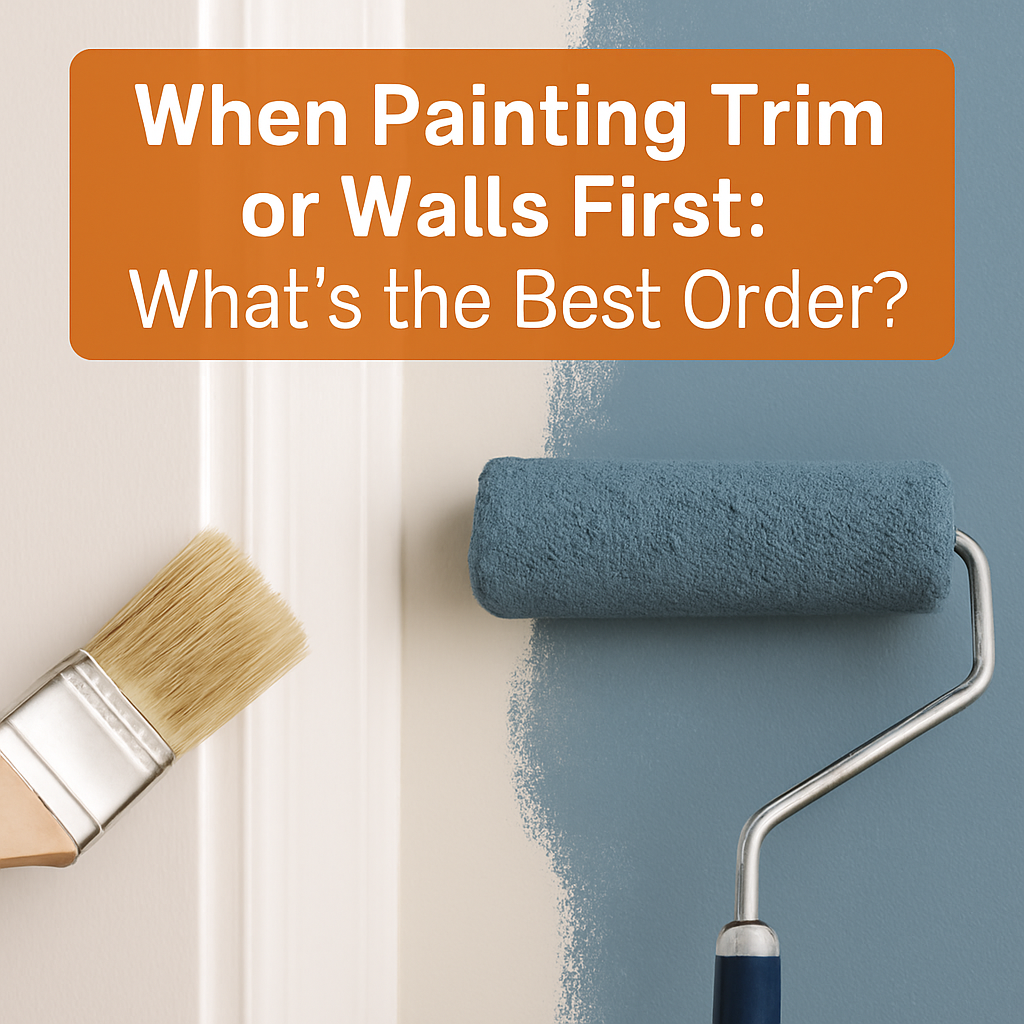When Painting Trim or Walls First: What’s the Best Order?

The Order of Painting is Important
When beginning an interior painting project, one of the most common questions that arises is: Should you paint walls before trim or trim before walls? Because the order affects the efficiency and cleaning process, it’s important to consider the answer. The best way to paint an interior room is in the right order. This will ensure that you have fewer touch-ups and better results. Some homeowners paint the walls first, while others believe that the trim should be painted before. Understanding the pros, cons, and benefits of each method will help you choose what is best for your room and style.
Prior to painting, paint the walls.
Most painters suggest starting with the wall, especially when you are rolling large surfaces. You can move faster by painting the walls before you paint your trim. It is a good method if you are planning to use painter’s tape later to protect the edge. A wall paint will cover any minor slips on the trim that you may have made. You can then fix these when you paint the trim. You may be wondering whether the order of painting matters. The answer is yes, it can affect how seamless your end result looks. For DIYers who want to be flexible and quick, painting the walls first can be a good option.
What order to choose for your project
Depending on the situation, you can decide whether to paint trim or walls first. Painting walls first is a good idea if you want to be efficient and cover large areas of wall quickly. If precision and sharp lines are important to you, it may be best to start with the trim. Consider factors such as your level of skill, whether or not you will use painter’s tape, and the condition of your trim. The order for painting trim and walls ultimately comes down to the balance between speed and quality. Both orders can work for many projects if you are careful to prepare and finish.
Step-by-Step Guide
Painting Interior Trim and Walls can be done in any order, but there are a few key steps to follow. Cleanse surfaces, sand rough areas, and apply primer, if necessary. Drop cloths can be used to protect furniture and floors. Use an angled sashbrush to cut along the edges. Then, roll or brush large areas. For a smoother finish, always work in the direction that the wall or trim grain is running. Check for drips and uneven spots, and fix them immediately. This routine will ensure professional results, whether you are painting the trim first or the walls.
How to get crisp, clean lines between wall and trim
One of the most difficult things to do when painting is getting sharp lines. How to get a clean line between trim and wall is a common question. Preparation is key. Painter’s tape of high quality should be used along the edges and pressed firmly to prevent paint bleeding. For the best finish, remove the tape when the paint is still slightly wet. Use the “cut-in technique” with a steady brush and a steady hand. It takes time to learn the correct way to cut in trim color, but you will be rewarded with professional results.
Avoid these Common Mistakes
If you are not careful, even simple painting projects can turn out badly. A common mistake is to ignore prep work. Dusty walls or trim can make it difficult for paint to adhere properly. The wrong tools can also cause streaks or uneven coverage. Beginners also overfill brushes, which can cause drips. Not removing the tape at the correct time can also ruin clean lines. Avoiding these pitfalls, whether you start with the walls or trims first, will help your project run smoothly and produce lasting results. The smallest details can make a big difference when it comes to painting.
Conclusion and Final Recommendation
Should you paint the trim before the walls or vice versa? It depends on what you value. For large areas, painting the walls first will be quicker and easier. Painting trim first allows for greater precision. If you use the best tools, follow best practices, and prepare thoroughly, both approaches can produce excellent results. The order in which you paint an interior room is ultimately determined by your comfort level, project requirements, and the tools that you use. Your walls and trim will be fresh, crisp, and finished beautifully with proper planning.
FAQs
Do you paint walls or trim first?
Both methods work—walls first for speed, trim first for precision.
What’s the best order to paint a room interior?
It depends on your project, but many DIYers prefer walls first.
How do I get clean lines between wall and trim?
Use painter’s tape, press firmly, and remove while paint is slightly wet.
Does painting order really matter?
Yes, it affects efficiency and how much touch-up you’ll need later.
What tools do I need for trim painting?
A quality angled brush, painter’s tape, and microfiber cloths are essential.
